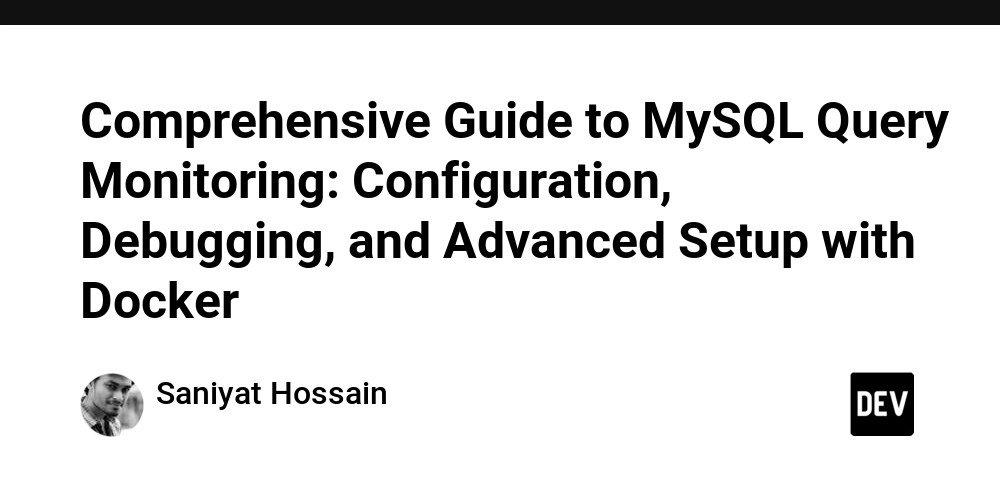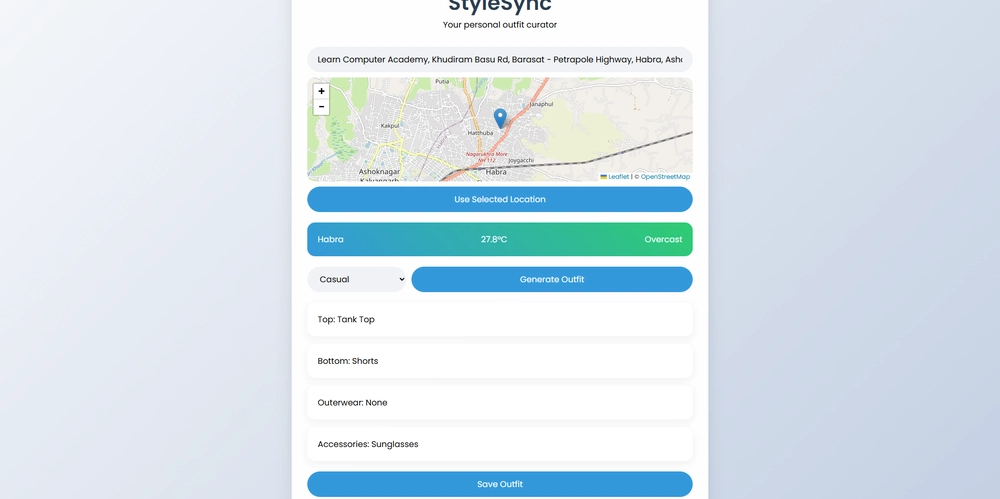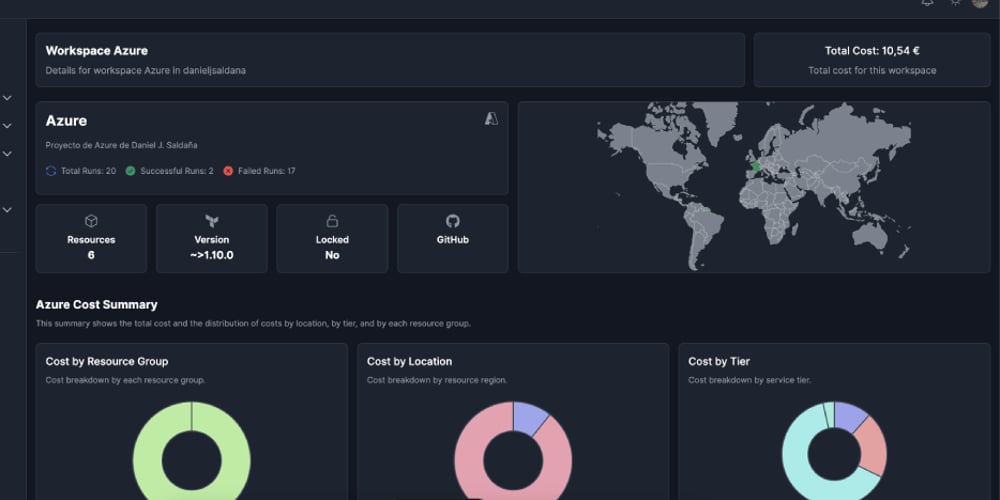Comprehensive Guide to MySQL Query Monitoring: Configuration, Debugging, and Advanced Setup with Docker
Problem Statement Efficient MySQL query monitoring is essential to identify performance bottlenecks, optimize database operations, and ensure overall system stability, especially for high-traffic applications. Poorly optimized queries can result in slow page loads, increased resource consumption, and even system outages. While MySQL provides built-in tools for query monitoring, configuring these tools effectively, debugging complex queries, and utilizing external monitoring tools can be challenging. This guide covers: How to enable and disable query logs on MySQL, including Docker containerized MySQL. Best practices for monitoring query performance in production. Advanced setups for performance optimization. Debugging MySQL stored procedures, triggers, functions, and transactions. Real-world examples and case studies of performance issues and their resolution. Table of Contents Enabling and Disabling MySQL Query Logs: OS-wise Configuration Linux and macOS Windows Docker Advanced Setup: Optimizing MySQL Query Logs for Production Debugging MySQL Stored Procedures, Triggers, Functions, and Transactions Real-World Example Cases and Case Study Pros and Cons of MySQL Query Monitoring Tools Docker Compose MySQL Setup for Monitoring Version Compatibility and Support Conclusion Enabling and Disabling MySQL Query Logs: OS-wise Configuration MySQL provides two main logging mechanisms for query monitoring: the General Query Log and the Slow Query Log. These logs can be configured to monitor the queries executed by MySQL. Linux and macOS Enabling Query Logs: Edit the MySQL configuration file (my.cnf or my.ini), typically found at /etc/mysql/my.cnf or /etc/my.cnf. Add the following under the [mysqld] section: General Query Log: [mysqld] general_log = 1 general_log_file = /var/log/mysql/mysql.log # Adjust the file path Slow Query Log: slow_query_log = 1 slow_query_log_file = /var/log/mysql/mysql-slow.log long_query_time = 1 # Log queries taking longer than 1 second Restart MySQL: Restart the MySQL service to apply the changes: sudo systemctl restart mysql Dynamically Enabling Query Logs: Enable the logs without restarting MySQL: SET GLOBAL general_log = 'ON'; SET GLOBAL slow_query_log = 'ON'; SET GLOBAL long_query_time = 1; Disabling the Query Log: Disable the logs dynamically: SET GLOBAL general_log = 'OFF'; SET GLOBAL slow_query_log = 'OFF'; Viewing Logs: You can view logs using tail: tail -f /var/log/mysql/mysql.log tail -f /var/log/mysql/mysql-slow.log Windows Enabling the Query Log: Open the my.ini file located in the MySQL installation directory (e.g., C:\ProgramData\MySQL\MySQL Server 8.0). Add the following lines: General Query Log: [mysqld] general_log = 1 general_log_file = C:/ProgramData/MySQL/MySQL Server 8.0/mysql.log Slow Query Log: slow_query_log = 1 slow_query_log_file = C:/ProgramData/MySQL/MySQL Server 8.0/mysql-slow.log long_query_time = 1 Restart MySQL: Restart MySQL from Services or via the command line: net stop mysql net start mysql Dynamically Enabling Query Logs: Enable logs dynamically: SET GLOBAL general_log = 'ON'; SET GLOBAL slow_query_log = 'ON'; SET GLOBAL long_query_time = 1; Disabling the Query Log: Disable query logs dynamically: SET GLOBAL general_log = 'OFF'; SET GLOBAL slow_query_log = 'OFF'; Docker (Container-based MySQL) Running MySQL in a Docker container involves mounting configuration files or passing environment variables to configure query logging. Enabling Query Logs in Docker: When running MySQL in Docker, configure query logs via environment variables or by mounting a custom my.cnf file. Example with Docker Compose: version: '3.8' services: mysql: image: mysql:8 environment: MYSQL_ROOT_PASSWORD: root MYSQL_LOG_CONSOLE: 1 volumes: - ./my.cnf:/etc/mysql/my.cnf Alternatively, add the following to a custom my.cnf file: [mysqld] general_log = 1 general_log_file = /var/lib/mysql/mysql.log slow_query_log = 1 slow_query_log_file = /var/lib/mysql/mysql-slow.log long_query_time = 1 Viewing Logs in Docker: To view logs within the container, use the following command: docker logs mysql-container Advanced Setup: Optimizing MySQL Query Logs for Production In production environments, logging every query (especially in the General Query Log) can introduce significant overhead. To optimize query monitoring, consider the following techniques: 1. Use log_output for Table Logging Instead of writing logs to files, you can log to a table, which is easier to query and less resource-intensive. log_output = TABLE general_log = 1 This stores logs in the mysql.general_log table. 2. Log Ro

Problem Statement
Efficient MySQL query monitoring is essential to identify performance bottlenecks, optimize database operations, and ensure overall system stability, especially for high-traffic applications. Poorly optimized queries can result in slow page loads, increased resource consumption, and even system outages. While MySQL provides built-in tools for query monitoring, configuring these tools effectively, debugging complex queries, and utilizing external monitoring tools can be challenging.
This guide covers:
- How to enable and disable query logs on MySQL, including Docker containerized MySQL.
- Best practices for monitoring query performance in production.
- Advanced setups for performance optimization.
- Debugging MySQL stored procedures, triggers, functions, and transactions.
- Real-world examples and case studies of performance issues and their resolution.
Table of Contents
-
Enabling and Disabling MySQL Query Logs: OS-wise Configuration
- Linux and macOS
- Windows
- Docker
- Advanced Setup: Optimizing MySQL Query Logs for Production
- Debugging MySQL Stored Procedures, Triggers, Functions, and Transactions
- Real-World Example Cases and Case Study
- Pros and Cons of MySQL Query Monitoring Tools
- Docker Compose MySQL Setup for Monitoring
- Version Compatibility and Support
- Conclusion
Enabling and Disabling MySQL Query Logs: OS-wise Configuration
MySQL provides two main logging mechanisms for query monitoring: the General Query Log and the Slow Query Log. These logs can be configured to monitor the queries executed by MySQL.
Linux and macOS
-
Enabling Query Logs:
- Edit the MySQL configuration file (
my.cnformy.ini), typically found at/etc/mysql/my.cnfor/etc/my.cnf. - Add the following under the
[mysqld]section:
General Query Log:
[mysqld] general_log = 1 general_log_file = /var/log/mysql/mysql.log # Adjust the file pathSlow Query Log:
slow_query_log = 1 slow_query_log_file = /var/log/mysql/mysql-slow.log long_query_time = 1 # Log queries taking longer than 1 second - Edit the MySQL configuration file (
Restart MySQL:
Restart the MySQL service to apply the changes:
sudo systemctl restart mysql
- Dynamically Enabling Query Logs: Enable the logs without restarting MySQL:
SET GLOBAL general_log = 'ON';
SET GLOBAL slow_query_log = 'ON';
SET GLOBAL long_query_time = 1;
- Disabling the Query Log: Disable the logs dynamically:
SET GLOBAL general_log = 'OFF';
SET GLOBAL slow_query_log = 'OFF';
-
Viewing Logs:
You can view logs using
tail:
tail -f /var/log/mysql/mysql.log
tail -f /var/log/mysql/mysql-slow.log
Windows
-
Enabling the Query Log:
- Open the
my.inifile located in the MySQL installation directory (e.g.,C:\ProgramData\MySQL\MySQL Server 8.0). - Add the following lines:
General Query Log:
[mysqld] general_log = 1 general_log_file = C:/ProgramData/MySQL/MySQL Server 8.0/mysql.logSlow Query Log:
slow_query_log = 1 slow_query_log_file = C:/ProgramData/MySQL/MySQL Server 8.0/mysql-slow.log long_query_time = 1 - Open the
Restart MySQL:
Restart MySQL from Services or via the command line:
net stop mysql
net start mysql
- Dynamically Enabling Query Logs: Enable logs dynamically:
SET GLOBAL general_log = 'ON';
SET GLOBAL slow_query_log = 'ON';
SET GLOBAL long_query_time = 1;
- Disabling the Query Log: Disable query logs dynamically:
SET GLOBAL general_log = 'OFF';
SET GLOBAL slow_query_log = 'OFF';
Docker (Container-based MySQL)
Running MySQL in a Docker container involves mounting configuration files or passing environment variables to configure query logging.
-
Enabling Query Logs in Docker:
When running MySQL in Docker, configure query logs via environment variables or by mounting a custom
my.cnffile.
Example with Docker Compose:
version: '3.8'
services:
mysql:
image: mysql:8
environment:
MYSQL_ROOT_PASSWORD: root
MYSQL_LOG_CONSOLE: 1
volumes:
- ./my.cnf:/etc/mysql/my.cnf
Alternatively, add the following to a custom my.cnf file:
[mysqld]
general_log = 1
general_log_file = /var/lib/mysql/mysql.log
slow_query_log = 1
slow_query_log_file = /var/lib/mysql/mysql-slow.log
long_query_time = 1
- Viewing Logs in Docker: To view logs within the container, use the following command:
docker logs mysql-container
Advanced Setup: Optimizing MySQL Query Logs for Production
In production environments, logging every query (especially in the General Query Log) can introduce significant overhead. To optimize query monitoring, consider the following techniques:
1. Use log_output for Table Logging
Instead of writing logs to files, you can log to a table, which is easier to query and less resource-intensive.
log_output = TABLE
general_log = 1
This stores logs in the mysql.general_log table.
2. Log Rotation
MySQL doesn’t handle log rotation automatically. Set up logrotate (on Linux) to rotate query logs and avoid disk space issues.
Example for Linux (/etc/logrotate.d/mysql):
/var/log/mysql/*.log {
daily
rotate 7
compress
missingok
notifempty
create 640 mysql mysql
}
3. Adjust the long_query_time Threshold
Set the long_query_time higher (e.g., 2-5 seconds) in high-traffic systems to avoid excessive logging of short queries.
long_query_time = 2 # Only log queries longer than 2 seconds
Debugging MySQL Stored Procedures, Triggers, Functions, and Transactions
1. Debugging Stored Procedures and Functions
MySQL doesn’t have detailed built-in logging for stored procedures and functions, but you can use the following strategies:
- Using SIGNAL for Error Logging:
MySQL supports the SIGNAL SQLSTATE command to log custom error messages within procedures or functions.
DELIMITER //
CREATE PROCEDURE DebugProcedure()
BEGIN
SIGNAL SQLSTATE '45000' SET MESSAGE_TEXT = 'Procedure execution started';
-- Logic here
END //
DELIMITER ;
- Using SELECT Statements:
You can output debug information directly from within the procedure.
SELECT 'Debugging procedure...';
2. Debugging Triggers
Debugging triggers requires adding SELECT statements to output values during execution.
Example:
CREATE TRIGGER before_insert_order
BEFORE INSERT ON orders
FOR EACH ROW
BEGIN
SELECT 'Inserting new order...';
END;
3. Debugging Transactions
Track and debug transactions using the following tools:
- SHOW ENGINE INNODB STATUS:
This command provides details on transaction status, locks, and deadlocks.
SHOW ENGINE INNODB STATUS;
- Using ROLLBACK for Testing:
In a testing environment, use ROLLBACK to undo transactions and test logic:
START TRANSACTION;
-- Logic here
ROLLBACK;
Real-World Example Cases and Case Study
Case Study 1: E-Commerce Optimization
Problem:
An e-commerce platform experiences slow performance during peak sales events. The slow response is traced back to long-running queries on the orders table.
Solution:
- Enable the Slow Query Log and capture queries that take more than 2 seconds.
- Use
pt-query-digestto analyze the slow query logs. - The analysis reveals missing indexes on the
orderstable, particularly forcustomer_idandorder_status. - After adding indexes, query performance improves significantly.
Outcome:
Query execution times decreased by over 50%, and the platform's performance during peak sales improved.
Case Study 2: Debugging Trigger in Banking System
Problem:
A trigger responsible for updating account balances after a transaction fails intermittently, causing balance discrepancies.
Solution:
- Add
SIGNAL SQLSTATEto the trigger to log errors. - Debug logs reveal that a missing foreign key constraint causes the failure when invalid account IDs are provided.
Outcome:
After fixing the foreign key constraints and adding error logging, the trigger works correctly, and account balances are accurate.
Pros and Cons of MySQL Query Monitoring Tools
1. General Query Log
Pros:
- Logs all queries, useful for detailed audits.
- Easy to enable and configure.
Cons:
- High performance overhead.
- Logs can grow rapidly, consuming disk space.
2. Slow Query Log
Pros:
- Performance-focused: Captures only slow queries, reducing overhead.
- Helps identify query bottlenecks.
Cons:
- Only logs slow queries.
- Requires tuning of
long_query_time.
3. Performance Schema
Pros:
- Provides granular insights into MySQL performance.
- Highly configurable.
Cons:
- Complex setup and interpretation.
- Can add overhead in high-traffic environments.
4. External Tools (PMM, Datadog, New Relic)
Pros:
- Real-time monitoring with dashboards and alerts.
- Centralized monitoring for MySQL and other services.
Cons:
- Resource-intensive.
- Costly subscription-based services.
Docker Compose MySQL Setup for Monitoring
If you are using Docker for MySQL, you can configure MySQL query logs with Docker Compose. Here’s an example docker-compose.yml to run MySQL with logging enabled:
version: '3.8'
services:
mysql:
image: mysql:8
container_name: mysql-container
environment:
MYSQL_ROOT_PASSWORD: root
volumes:
- ./my.cnf:/etc/mysql/my.cnf # Custom MySQL configuration
- mysql-data:/var/lib/mysql # Persistent data storage
ports:
- "3306:3306"
volumes:
mysql-data:
In the my.cnf file, ensure the following log configurations:
[mysqld]
general_log = 1
general_log_file = /var/lib/mysql/mysql.log
slow_query_log = 1
slow_query_log_file = /var/lib/mysql/mysql-slow.log
long_query_time = 1
This setup ensures that MySQL logs queries in a containerized environment. You can view the logs with docker logs mysql-container.
Version Compatibility and Support
- MySQL Versions: The monitoring tools discussed (General Query Log, Slow Query Log, Performance
Schema) are available in MySQL 5.6+. However, MySQL 5.7 and 8.0 provide improved query optimization and logging features.
- Performance Schema: Fully supported in MySQL 5.6+, but should be configured correctly to avoid performance overhead.
- Docker-based MySQL: The configuration discussed works well with MySQL 8.x and is compatible with Docker Compose, providing a seamless experience for containerized MySQL setups.
Conclusion
Effective query monitoring is essential for optimizing MySQL performance and ensuring the stability of your database, especially in production environments. By utilizing tools such as the General Query Log, Slow Query Log, Performance Schema, and external solutions like Percona Monitoring and Management (PMM) and Datadog, you can proactively identify slow queries and bottlenecks. Additionally, debugging stored procedures, triggers, and transactions is essential for identifying and resolving logic errors that could affect data integrity.
For Docker-based MySQL setups, the configuration remains largely the same, with the added flexibility of configuring logs directly within the container. Monitoring MySQL through the right configurations and setups ensures that your database remains fast, responsive, and scalable even under heavy loads.




















































%20Abstract%20Background%20112024%20SOURCE%20Amazon.jpg)






















































































































![[The AI Show Episode 142]: ChatGPT’s New Image Generator, Studio Ghibli Craze and Backlash, Gemini 2.5, OpenAI Academy, 4o Updates, Vibe Marketing & xAI Acquires X](https://www.marketingaiinstitute.com/hubfs/ep%20142%20cover.png)
























































































































































































































































-Nintendo-Switch-2-–-Overview-trailer-00-00-10.png?width=1920&height=1920&fit=bounds&quality=80&format=jpg&auto=webp#)





















_Anna_Berkut_Alamy.jpg?#)













































































































![YouTube Announces New Creation Tools for Shorts [Video]](https://www.iclarified.com/images/news/96923/96923/96923-640.jpg)





































































![[Weekly funding roundup March 29-April 4] Steady-state VC inflow pre-empts Trump tariff impact](https://images.yourstory.com/cs/2/220356402d6d11e9aa979329348d4c3e/WeeklyFundingRoundupNewLogo1-1739546168054.jpg)





























































